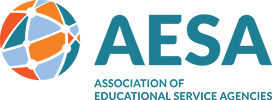On July 24, the 5th Circuit Court handed down its decision in the case Consumers Research et. al vs. the FCC, where the plaintiffs argued that using E-rate funds for Wi-Fi on school buses exceeds the FCC’s authority to provide internet access in schools and libraries. Read early coverage on the case here.
Quick Summary: In its decision, the 5th Circuit just ruled that the universal service fund mechanism is unconstitutional because it violates something called the nondelegation doctrine. Basically, the ruling says that Congress delegated tax authority to the FCC and the FCC delegated that tax authority to a private entity and the force of those two delegations was an impermissible delegation of legislative authority. The 5th circuit covers Louisiana, Mississippi and Texas.
Background: While AESA historically works only on E-Rate (the internet discount program that supports broadband access in schools and libraries), this decision is broader, and inclusive of all four programs funded via the Universal Service Fund (USF), meaning the ramifications will be much farther reaching than just internet access for schools. The four USF programs are:
- High Cost Support Mechanism: Provides support to certain qualifying telephone companies that serve high cost areas, thereby making phone service affordable for the residents of these regions.
- Low Income Support Mechanism: (Sometimes called Lifeline) Assists low-income customers by helping to pay for monthly telephone charges as well as connection charges to initiate telephone service.
- Rural Health Care Support Mechanism: Allows rural health care providers to pay rates for telecommunications services similar to those of their urban counterparts, making telehealth services affordable.
- Schools and Libraries Support Mechanism: (E-Rate) Provides telecommunication services (e.g., local and long-distance calling, high-speed lines), Internet access, and internal connections (the equipment to deliver these services) to eligible schools and libraries.
Looking Ahead: What does it mean for E-Rate? It is unclear. We are fairly certain this will NOT jeopardize E-Rate funds for the 24-25 school year. Beyond that, AESA and AASA’s Noelle Ellerson Ng will be on a call with the FCC on Thursday and update our members accordingly. Executive Director, Dr. Joan Wade, will also be attending a USAC Board of Directors meeting this week where she will learn more. There are three possible scenarios:
- The decision could be applied nationally, meaning all USF programs would be halted.
- The decision could be applied to only the 5th circuit (beneficiaries of the program in TX, LA, and MS)
- The decision is stayed pending appeal to the Supreme Court.
Anything short of a stay will be very disruptive to all programs, including education, and comes just as schools are coming online (pun intended) for the 2024-25 school year. This decision may be considered in a broader context. In the past year, both the 11th and 6th circuits issued decisions that upheld the USF structure, making it likely/possible this moves to SCOTUS (as SCOTUS will sometimes weigh in to provide a uniform answer when there is confusion or competing answers between different circuit courts).
